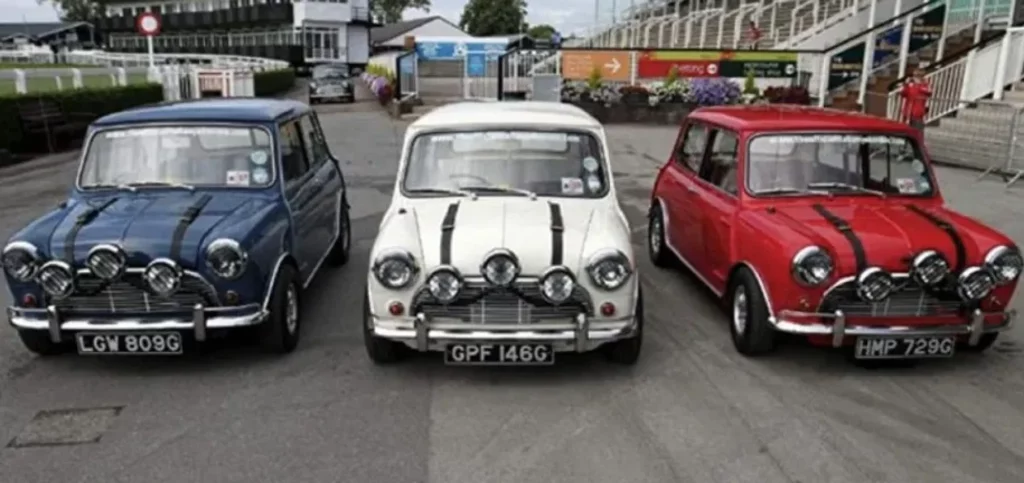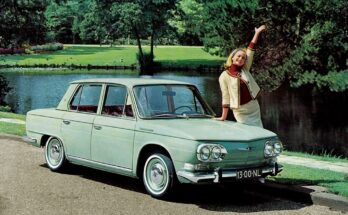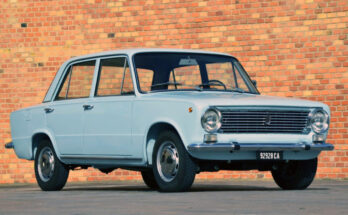Few cars in cinematic history have achieved the same legendary status as the Mini Cooper in The Italian Job. From the original 1969 classic to the 2003 remake, the diminutive but highly capable Mini has become synonymous with high-stakes heists, precision driving, and British cool.
Related: The Morris Mini Minor aka Austin Mini
Let’s dive into the role of the Mini Cooper in both versions of The Italian Job, exploring its cultural significance, technical capabilities, and the stunts that made these cars immortal on the silver screen.
The Original 1969 Film: A British Icon in a Crime Caper
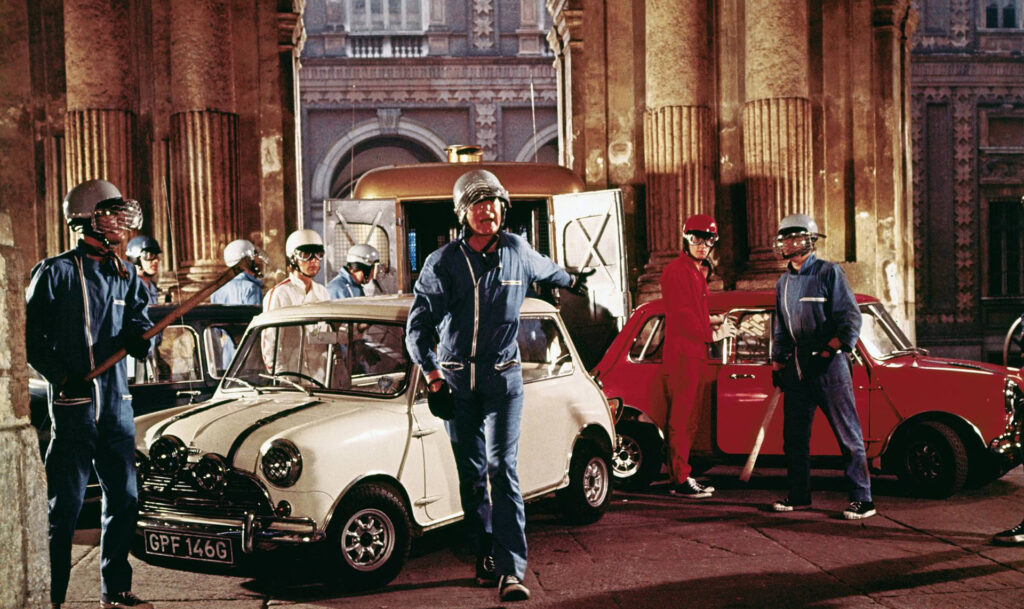
The Plot and the Heist
The Italian Job (1969) follows a band of British criminals, led by Michael Caine’s charming Charlie Croker, as they plot to steal a shipment of gold in Turin, Italy. The heart of the heist involves a thrilling getaway using three red, white, and blue Mini Coopers, expertly driven through narrow alleyways, downstairs, across rooftops, and even through sewer pipes to outmaneuver the police.
Why the Mini Cooper?
The original 1969 film was a showcase for British engineering, with the Mini Cooper being the perfect representation of “small but mighty” British manufacturing. At the time, the Mini had already become an iconic vehicle for its compact size, affordability, and surprisingly high performance, particularly in rally racing. Its agility and nimbleness made it the ideal choice for a movie that needed a car capable of weaving through tight European streets and pulling off complex stunts.
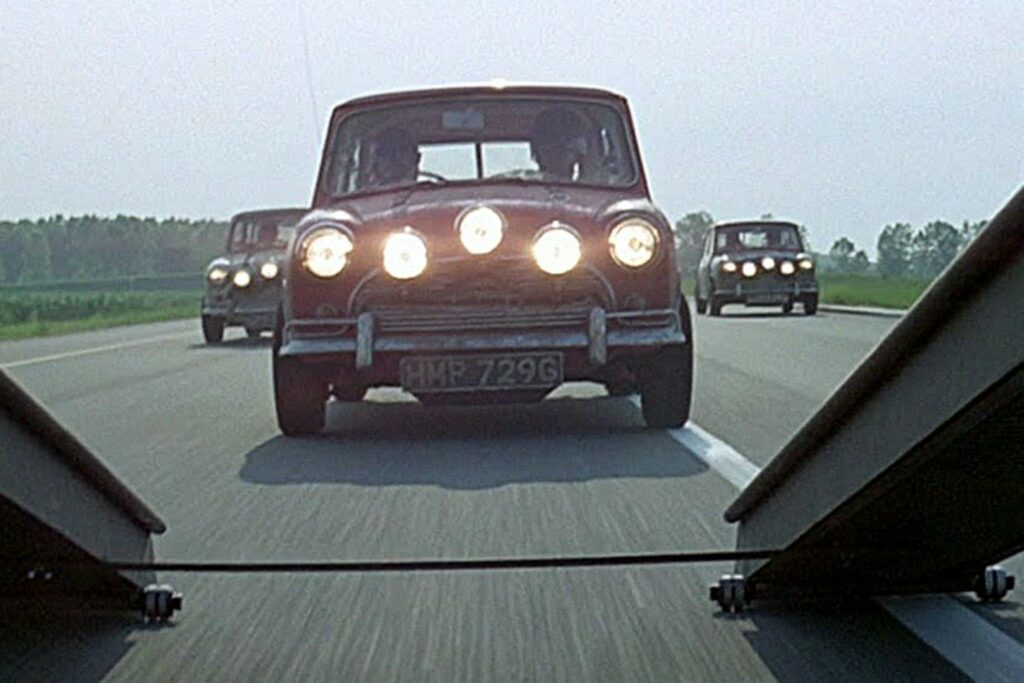
Key Points:
- Compact Size: The Mini Cooper was small enough to fit through the tightest of spaces, which was crucial for the film’s elaborate chase sequences.
- Performance: Despite its size, the Mini Cooper was known for its racing pedigree, having won multiple Monte Carlo Rallies in the 1960s, making it a legitimate choice for a fast-paced heist.
- Patriotic Symbol: The trio of red, white, and blue Minis represented the Union Jack, adding a layer of British pride to the film.
The Stunts
The car chase in The Italian Job remains one of the most iconic in cinema history. It’s a masterclass in practical stunt work, and all of it was performed without the aid of CGI, making it even more impressive. The Minis sped through tight urban environments, such as Turin’s winding streets, crowded shopping arcades, and even down the steps of churches.
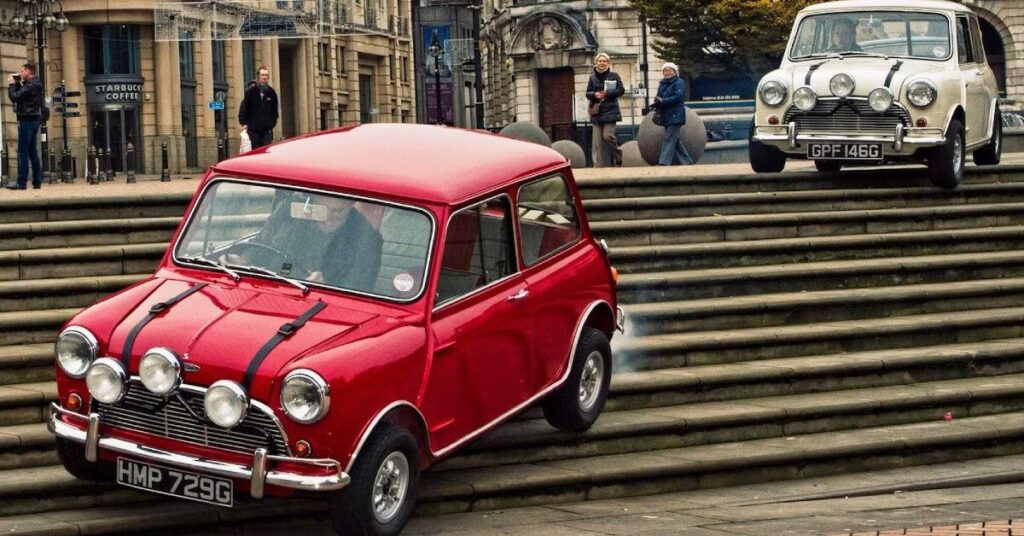
One of the most memorable sequences sees the Minis driving through the city’s sewer system, a feat made possible by the car’s lightweight frame and excellent handling. The stunt choreography made the Mini Coopers feel like a character in their own right, showing off their ability to adapt to the most improbable escape routes.
A chase scene from The Italian Job 1969
Cultural Impact
The 1969 film’s success cemented the Mini Cooper’s status as a cultural icon. The film not only elevated the car’s image globally but also made it a symbol of British ingenuity and coolness. The Mini became a fashionable car, linked to swinging London and the 1960s’ carefree, stylish attitude.
The 2003 Remake: Modernizing the Classic Heist
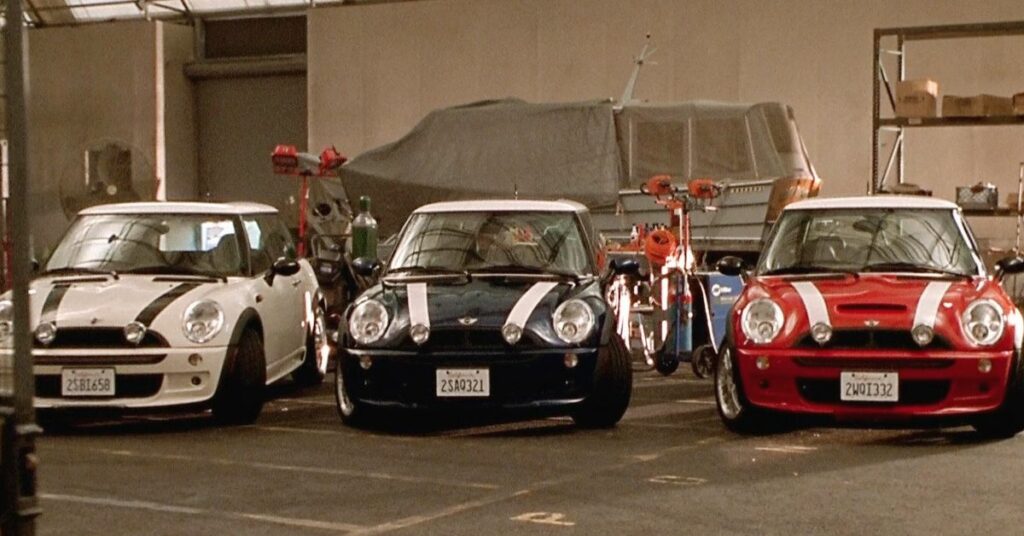
A New Generation of Minis
In the 2003 remake of The Italian Job, the Mini Cooper made a triumphant return. This time, the heist takes place in Los Angeles, and the new generation of BMW Mini Coopers became the stars of the show. These updated Minis retained the spirit of the originals but came with modern features and improved performance, making them even more suitable for the high-octane stunts that the film demanded.
Upgrading the Icon
By 2003, the Mini Cooper had been reimagined by BMW, who bought the rights to the brand in the late 1990s. The new Mini was larger than the classic 1960s model but retained the same distinctive design elements: the boxy shape, rounded headlights, and cheeky, compact appeal.
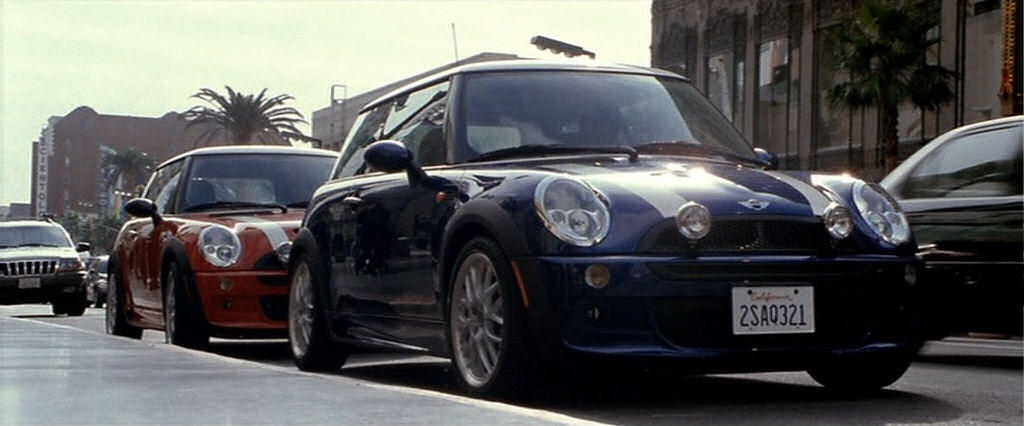
Key Differences Between the 1969 and 2003 Minis:
- Size: The new BMW Minis were slightly larger, providing more comfort and space for the film’s stars.
- Technology: The 2003 Mini Coopers came with modern enhancements like better suspension, improved engine performance, and electronic stability control, making them even more adept at handling demanding stunts.
- Customization: The remake featured heavily customized Minis equipped with high-tech gadgets, including explosive charges and reinforced frames, adding a layer of sophistication to the heist.
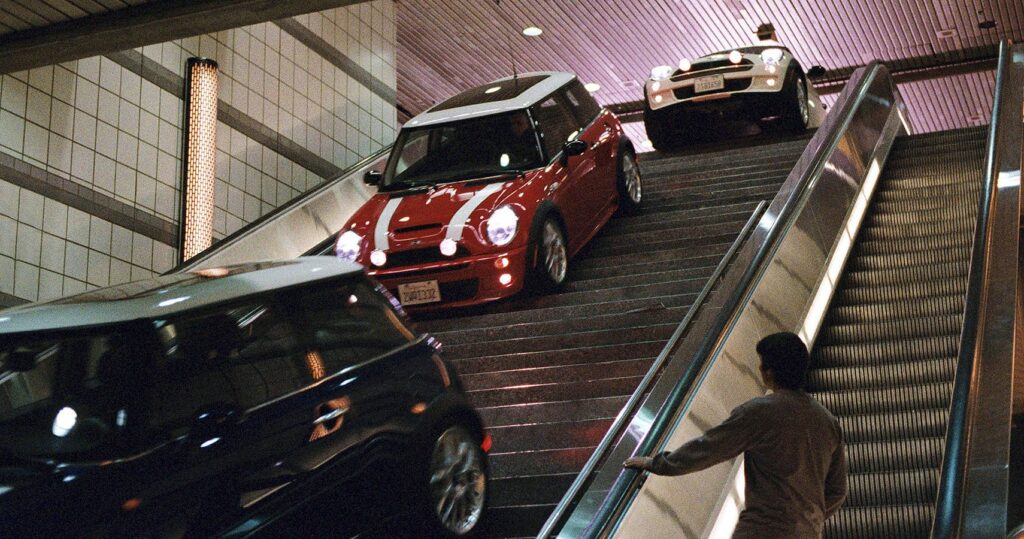
Choreographing the New Stunts
While the 1969 film’s stunts were impressive for their time, the 2003 remake dialed up the action with a combination of practical effects and CGI. The new chase scenes involved the Minis navigating through Los Angeles’s subway tunnels and leaping between rooftops. A highlight is the sequence where the Minis are loaded with stolen gold and driven through narrow streets, into subway tunnels, and across barriers—echoing the original film’s tight urban chases.
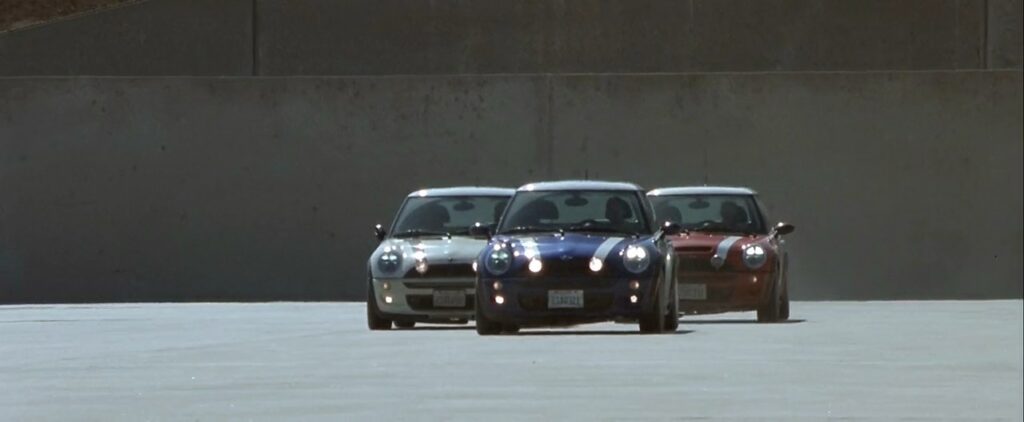
The Role of the Mini in the Remake
In the 2003 film, the Minis were used not just for their agility but also as a symbol of rebellion and style. The film’s heist crew, led by Mark Wahlberg and Charlize Theron, chooses the Mini Coopers for their ability to outsmart the police and navigate the city’s underbelly. Much like in the original, the cars represent cleverness and resourcefulness, traits that the crew embodies.
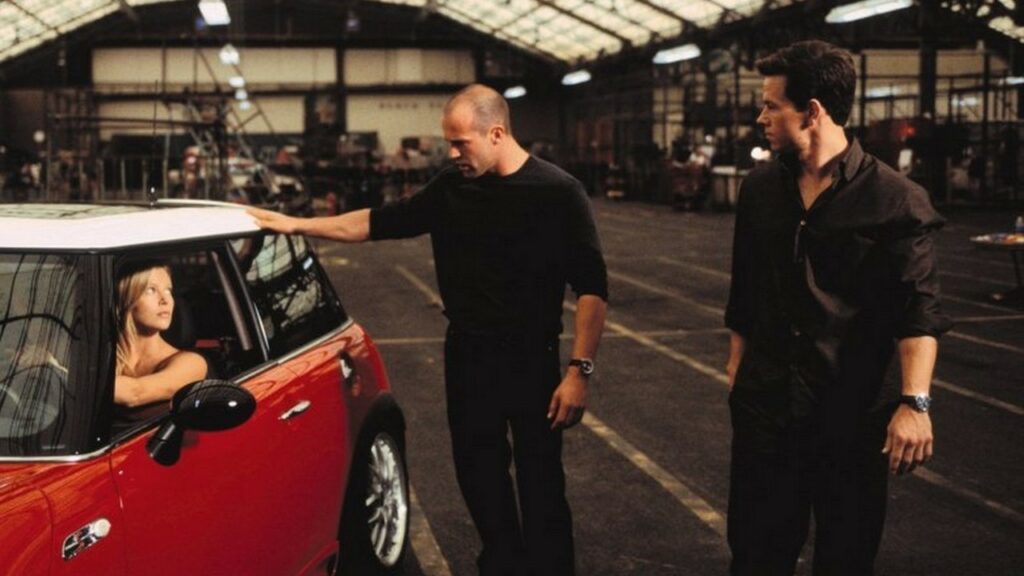
Legacy of the Mini Cooper in The Italian Job
Impact on Popular Culture
The Mini Coopers from both the 1969 and 2003 versions of The Italian Job became pop culture icons, with fans recreating the chases and purchasing Minis in homage to the films. The red, white, and blue Minis from the original film have been immortalized in toy form, advertisements, and even reenactments at car shows.
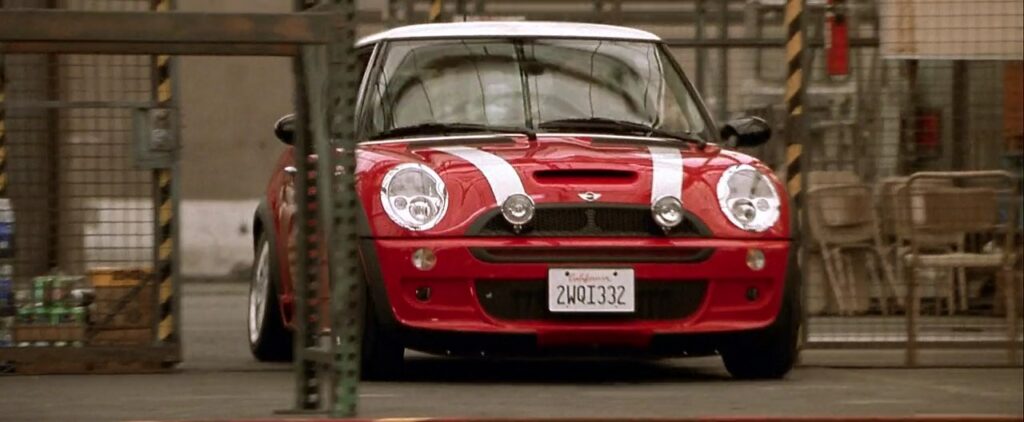
The 2003 remake revitalized interest in the Mini brand, helping BMW sell a new generation of Mini Coopers to fans drawn to their mix of retro style and modern performance. The car’s appearance in the film showed that the Mini, despite its small size, could compete with much larger, more powerful vehicles in both real-world driving and cinematic action.
The Mini’s Role in Cinema
The Mini Cooper’s presence in The Italian Job created a blueprint for the use of cars in heist films. It wasn’t about raw power or speed; it was about agility, smart maneuvering, and using the environment to the vehicle’s advantage. The Mini has since become a symbol for clever getaways in cinema, inspiring similar roles for small, nimble cars in later films.
Mini Coopers in action in The Italian Job 2003
Whether in the original 1969 classic or the 2003 remake, the Mini Cooper proved that size isn’t everything when it comes to action, style, and cultural impact. Its ability to navigate tight spaces and perform thrilling stunts made it the perfect vehicle for the heist-centric plot of The Italian Job. Beyond the screen, the Mini Cooper became a symbol of British cool and clever design, living on as an icon both in automotive history and in the hearts of moviegoers.

A computer animation professional with over 23 years of industry experience having served in leading organizations, TV channels & production facilities in Pakistan. An avid car enthusiast and petrolhead with an affection to deliver quality content to help shape opinions. Formerly written for PakWheels as well as major publications including Dawn. Founder of CarSpiritPK.com

